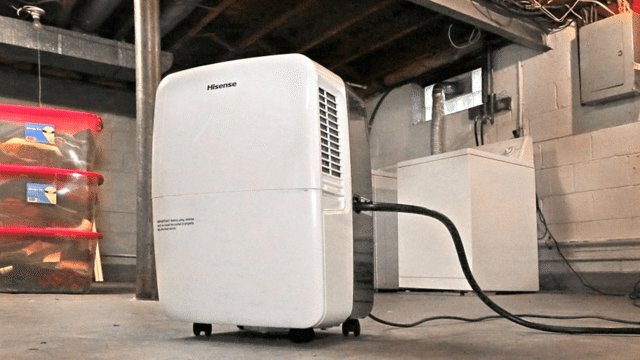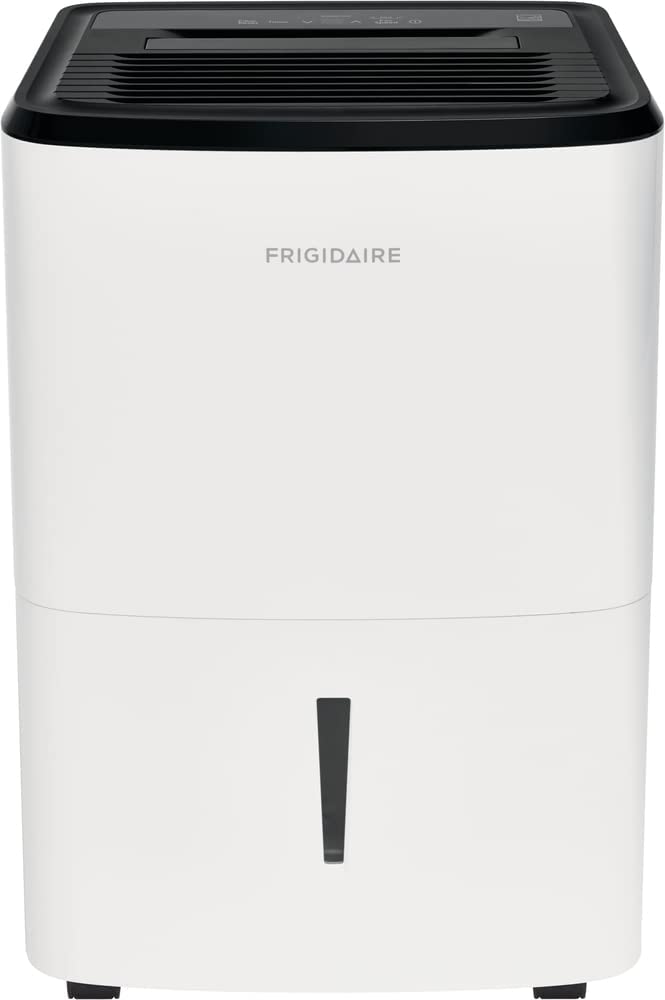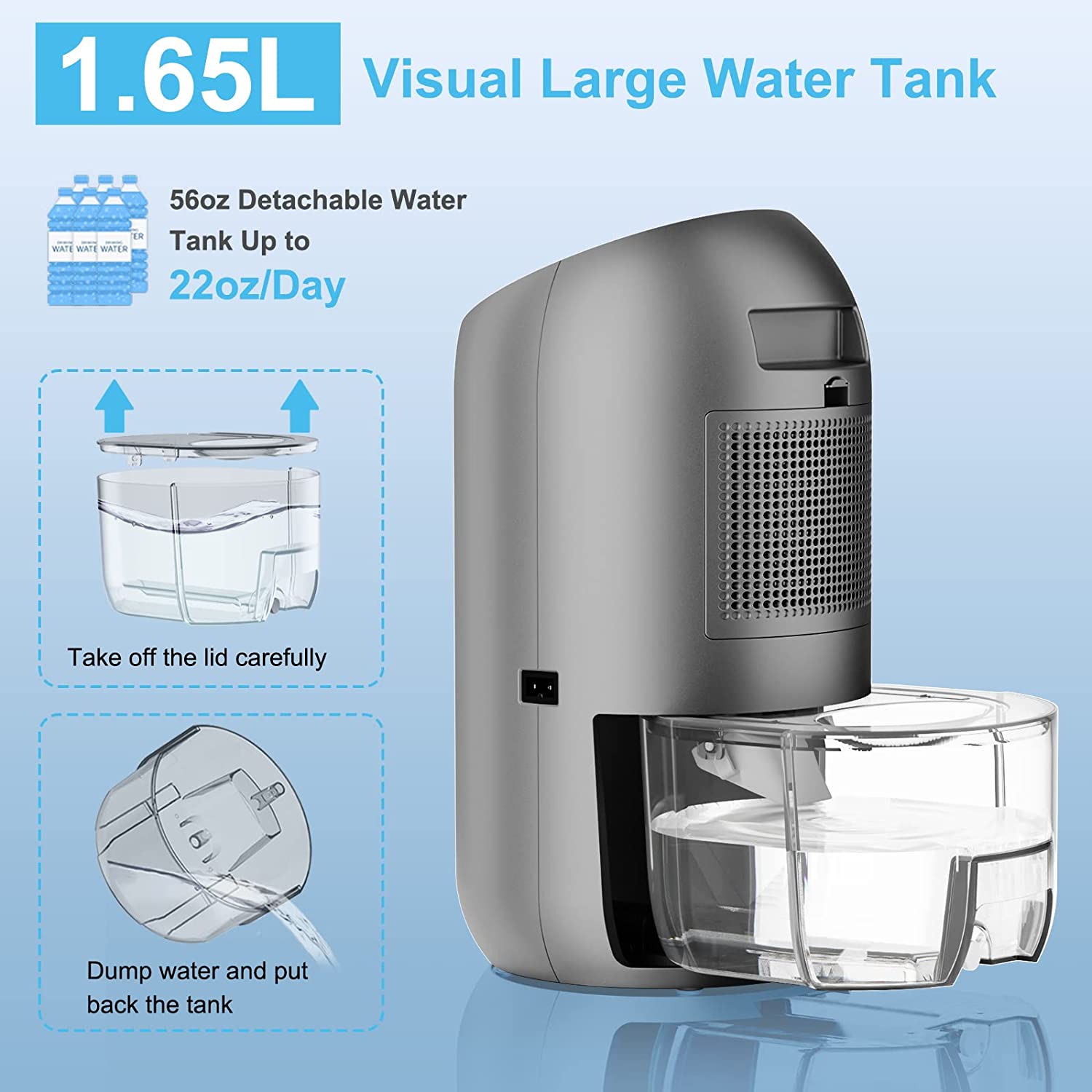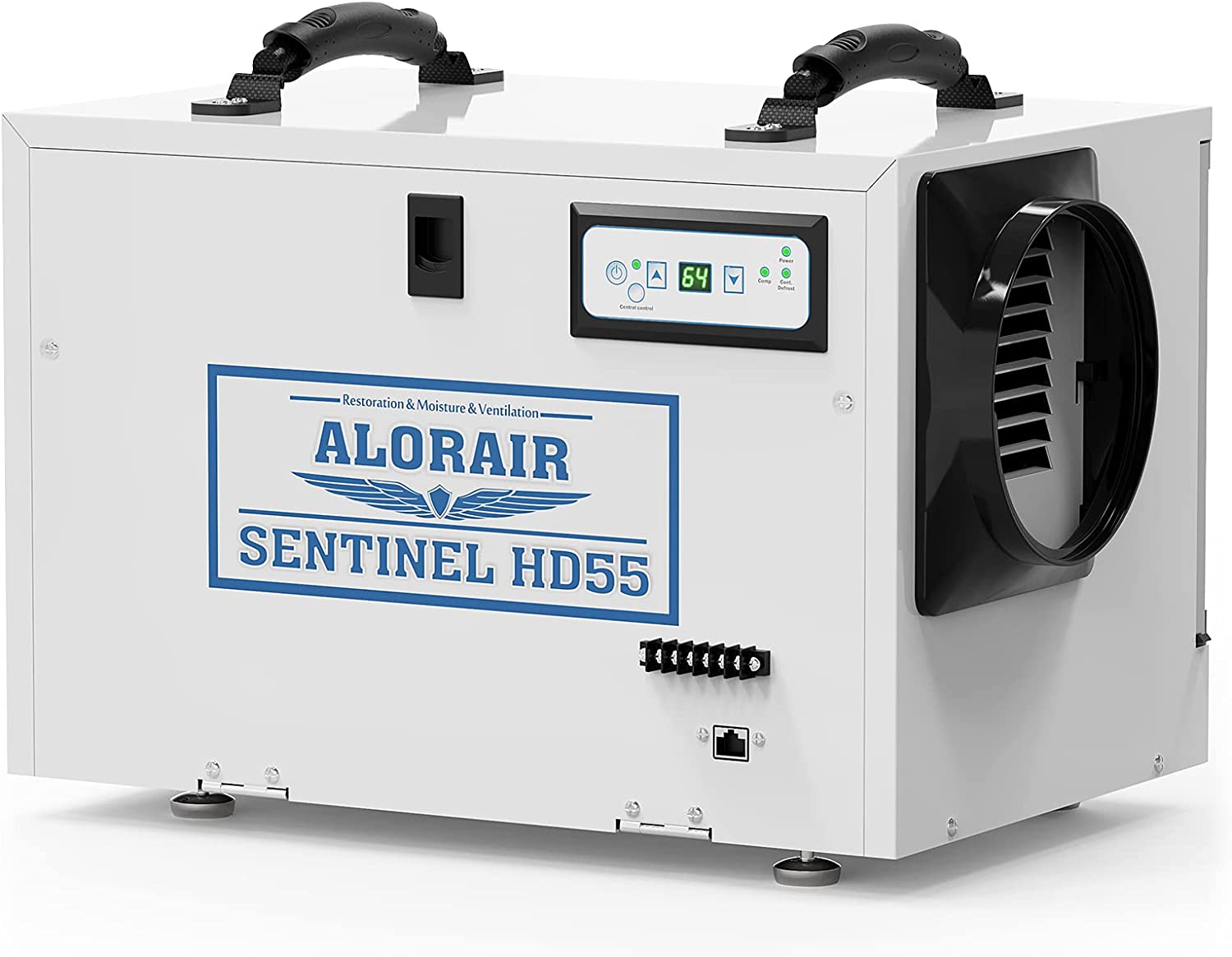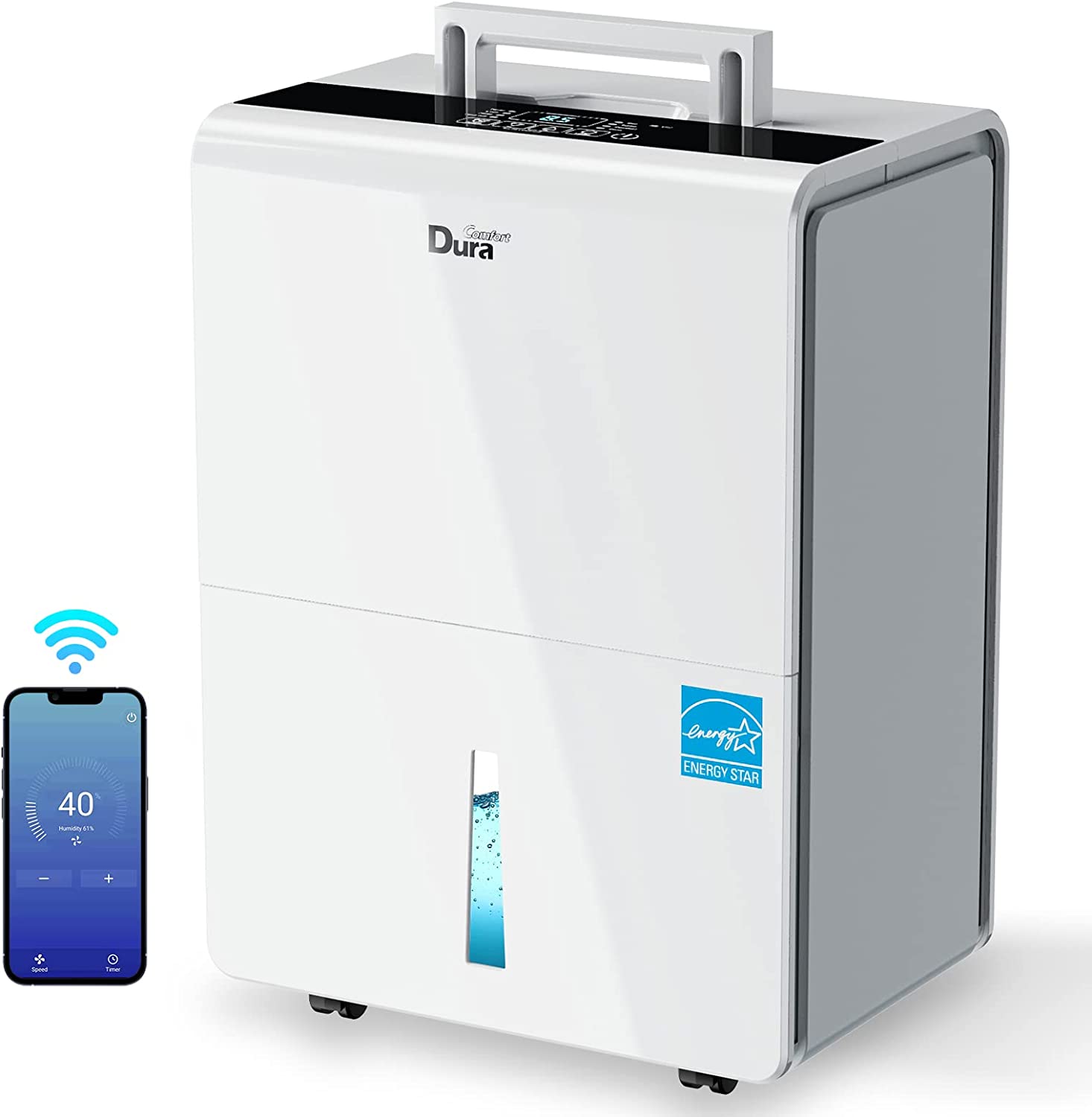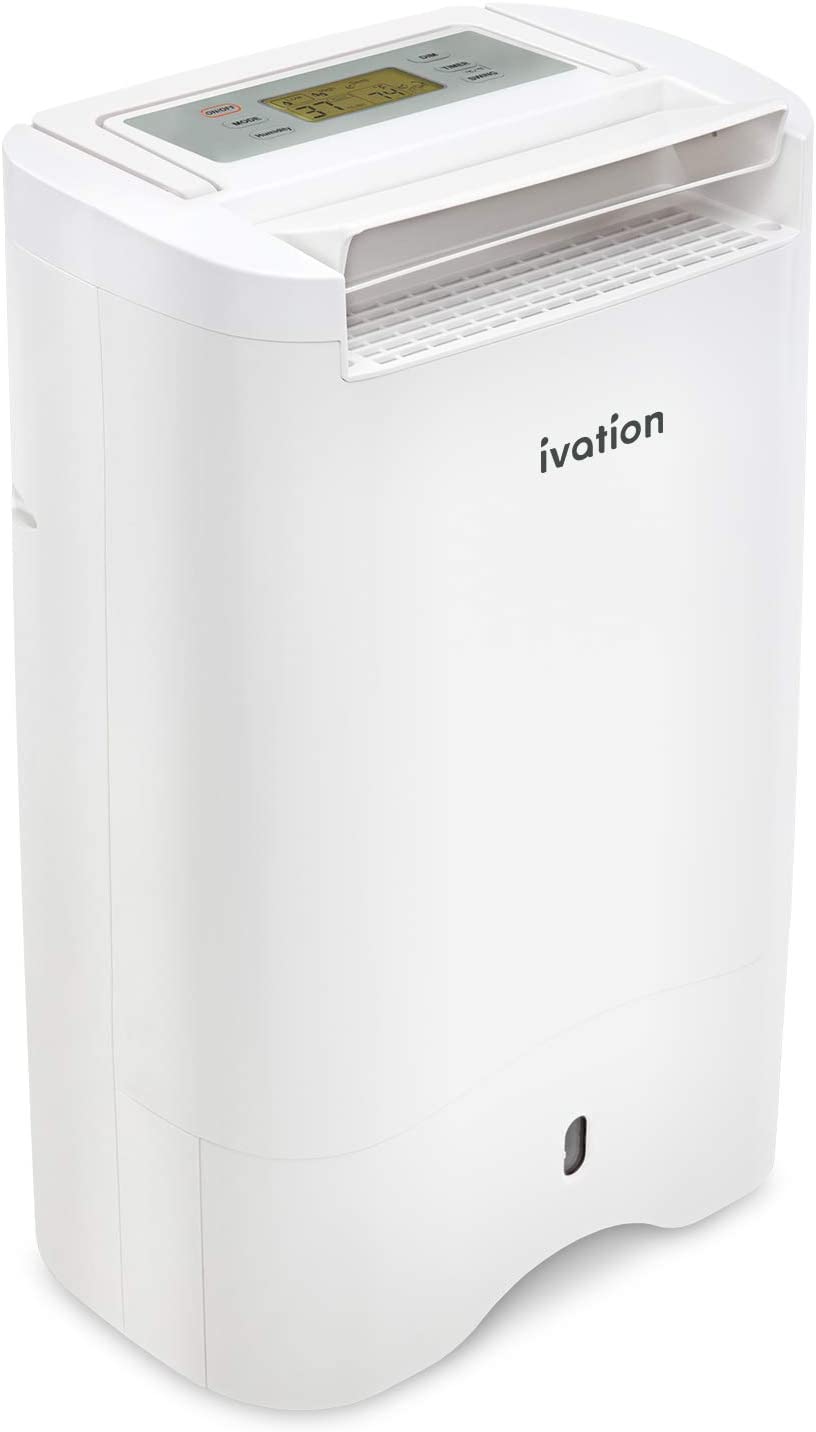Excessive humidity is a common phenomenon during winters and summers. And it’s even more common in the basement, where there are interior wall leaks and limited air ventilation. If left unchecked, the moisture buildup can damage your belongings stored in the basement.
To prevent that from happening, you should get the best dehumidifier for your basement. That’s a cost-effective and reliable way to combat moisture buildup.
But your problems aren’t likely to disappear if you buy the wrong dehumidifier.
As you’ll see later, there are different dehumidifiers, and not all are suited for a basement setting. Therefore, you must know which dehumidifier to buy and the various features you should look for.
In the subsequent section, I explain selecting the right humidifier for your basement. And then, I’ll list the top five options available for purchase currently.
Related: Best Dehumidifier for Bedroom – 6 Desiccant & Compressor Models
Table Of Contents
- 1 Best Dehumidifier for Basement Summary:
- 2 What Are The Different Types Of Dehumidifiers Suited For A Basement?
- 3 What Features Do I Need To Consider For A Basement Dehumidifier?
- 4 How big of a dehumidifier do I need for my basement?
- 5 Best Overall Dehumidifier for Basement
- 6 Best Budget Dehumidifier for Basement
- 7 Most Powerful Dehumidifier for Basement
- 8 Most Smart Dehumidifier for Basement
- 9 Best Desiccant Dehumidifier For Basement
- 10 Best Dehumidifier For Basement FAQs
Best Dehumidifier for Basement Summary:
- Best Overall: Frigidaire FFAD3533W1
- Best Budget: MAKAYLA Dehumidifier
- Most potent: ALORAIR Basement/Crawlspace Dehumidifier
- Best Smart dehumidifier: DuraComfort Smart dehumidifier
- Best desiccant dehumidifier: Ivation 19 Pint Small-Area Desiccant Dehumidifier
What Are The Different Types Of Dehumidifiers Suited For A Basement?
The first-ever commercial-grade dehumidifier was created in 1902 by Willis Carrier. He invented the machine to dehumidify a printing plant in Brooklyn.
Since then, dehumidifiers have come a long way, and you’ll find several types and capacities. Picking the right type is key to safeguarding your basement from excessive humidity.
There are currently three types of dehumidifiers available. These are:
- Refrigeration dehumidifiers – Also known as compressor dehumidifiers, they work along the principles of a refrigerator or air conditioner. These use an evaporator coil to condense the moist air and a condenser coil to reheat it. The warm, dry air is then released back into the environment. You’ll encounter these most common types of dehumidifiers in the marketplace.
- Desiccant motor dehumidifiers – These are newer machines that employ a humidity-absorbing material called a ‘desiccant.’ It can be silica gel, molecular sieve, or bentonite clay. The liquid molecules adhere to the desiccant surface through a process called adsorption. The excess moisture is adsorbed, and dry air is released back.
- Thermoelectric dehumidifiers – The newest types of dehumidifiers, the thermoelectric units, use a Peltier heat pump to capture the humid air. They’re less accepted among consumers because of their poor coefficient of performance (COP), which means they are less efficient.
Related: Air Purifier vs. Dehumidifier – Key Differences & Types
Which Dehumidifier to Select for Your Basement?
The type of dehumidifier to select for your basement would depend on two essential factors. These are:
- Basement size – If you’ve got a larger basement, you’re better off investing in a traditional compressor dehumidifier. These are more powerful and have higher capacities, making them ideal for a basement of over 1,000 sq feet.
- Temperature – The second thing to consider is the basement temperature. For warmer environments, compressor dehumidifiers are better. But if the temperature drops below 15°C (59°F), you should buy a desiccant dehumidifier. That’s because, for compressor units, the inner temperature needs to be lower than the outer temperature. But at 15°C or below, these units struggle to lower their inner temperature. For desiccant units, the temperature is irrelevant.
These are the two primary factors to consider. Other aspects like size, portability, and energy efficiency are subjective and aren’t as critical.
Related: Dehumidifier Freezing Up – Reasons And Solutions
What Features Do I Need To Consider For A Basement Dehumidifier?
All dehumidifiers achieve the same goal: to reduce humidity in the environment. But they all differ in features. This affects how easy or difficult they are to use.
When purchasing a basement dehumidifier, you must inspect the available features. These influence not only the functionalities but also the price.
For ease of use, here are the top five features you need in your basement dehumidifier:
-
Pint capacity
Dehumidifiers differ by their pint capacity, and this is perhaps the most critical difference. Pint capacity is the amount of moisture measured in pints (1 pint equals 0.47 liters) that the dehumidifier can remove daily. Thus, if the unit is rated as 30 pints, it will capture 30 pints of moisture in 24 hours.
The pint capacity for dehumidifiers ranges anywhere from 20 pints to over 150 pints. Generally, you’d need a 40- to 60-pint dehumidifier for residential purposes. But it all depends on the basement size, environment, and temperature, among other factors. I’ve explained how to determine the exact size of your basement below.
Along with pint capacity, you should also inspect the collection tank size. It should be big enough to collect water for the day.
-
Humidistat
A humidistat is an essential component of a dehumidifier. It enables you to set a humidity range for the basement you’d like to maintain. And the unit will pace itself to keep the humidity level static. This way, you can ensure that the basement is not too damp or dry.
Some models allow you to set an explicit range like 40-60% or 70-80%. These are easy and intuitive to operate. But you’ll find dehumidifiers with low, medium, and high settings. Contrary to the previous types, you can’t set a specific range. Wherever possible, you should go for explicit humidistats.
-
Controls
Some dehumidifiers are easier to control and operate than others. With the advancement in technology, you’ll come across smart dehumidifiers that are Wi-Fi enabled. You can control these from anywhere in the world with an internet connection.
Even if you don’t need a smart unit, you should at least opt for a dehumidifier with digital control rather than a manual one. These are more intuitive and are worth the extra money.
-
Auto shut-off
You don’t want your basement to get flooded in case you forgot to empty the tank before going to bed. That’s why a dehumidifier with an auto shut-off feature is recommended. These units are pre-programmed to turn off when their buckets are filled to capacity.
-
Portability
The final feature to consider is the portability of the dehumidifier. Does it come with caster wheels and handles? Or can they be installed if and when needed? A portable unit will make your life easier and even allow you to use the machine in multiple rooms if necessary.
Depending on your requirements, you should look for other features too. These are auto restart (the unit turns on after an outage automatically), air filter, hydrostat, extra buckets, etc.
How big of a dehumidifier do I need for my basement?
Buying a dehumidifier of an appropriate size is essential. While a large dehumidifier is not much of a problem, a smaller unit will find it harder to remove moisture from the environment.
How big of a dehumidifier you need to buy for the basement would depend on the basement size and environmental conditions. After determining the size, you should select a dehumidifier with a suitable pint capacity.
Here’s a table to help you determine the right size for your basement:
|
Basement size in (square feet) (→) |
||||
| Basement Humidity Level (↓) | 300 sq ft. | 500 sq ft. | 800 sq ft. | 1200 sq ft. |
| 50-60% | 20-25 pint | 25-30 pint | 35-40 pint | 50 pint |
| 60-70% | 20-25 pint | 25-30 pint | 35-40 pint | 50 pint |
| 70-80% | 25-30 pint | 30-40 pint | 40-50 pint | 55 to 60 pint |
| 80-90% | 30 pints and above | 40 pints and above | 50 pints and above | 60 pints and above |
If you have a basement larger than 1200 sq ft., you should invest in a commercial dehumidifier.
Now that you know the type of dehumidifier to invest in, here are the top 5 options to consider in 2023:
Best Overall Dehumidifier for Basement
Frigidaire FFAD3533W1 Dehumidifier
Specifications
- Brand – Frigidaire
- Pint capacity – 35 Pint
- Auto shut-off – Yes
- Weight – 40 lbs
This dehumidifier from Frigidaire is an all-around machine that has everything you’d need in a dehumidifier. First is the 35-pint capacity, which is enough for most residential basements. But you have the option of selecting 50 pints or 60 pints variant.
The bucket is in place to hold water and is equipped with a splash guard to prevent splashing. But you’d benefit from the continuous drain option that removes the pain of emptying the tank daily.
If you can’t use the continuous drain option, you have an automatic shut-off feature to save the day. It terminates operation once the front-loading bucket is full.
With this dehumidifier, the control is in your hands. You set the preferred humidity range, and the machine will act accordingly.
It can operate at a temperature as low as 40°F, thus ensuring all-season operation. While powerful, this unit is incredibly quiet, which is a perk.
Last but not least, the dehumidifier comes with caster wheels attached. So use it in the basement, bathroom, bedroom, or kitchen without restriction.
Easy to use and maintain, this should be your first choice if you’re in the market for a basement dehumidifier. Frigidaire is a reputed brand, and you can expect this unit to last years without malfunction.
Pros
- It does not require emptying the tank every day
- Year-round reliable dehumidification
- Simple and quiet operation
Cons
- The bucket size could have been bigger
Check the Frigidaire FFAD3533W1’s latest prices on Amazon
Best Budget Dehumidifier for Basement
MAKAYLA Dehumidifier
Specifications
- Brand – Makayla
- Pint capacity – 3.5
- Auto shut-off – Yes
- Weight – 4 pounds
Need a quick and easy way to remove moisture from your basement? This dehumidifier is designed specifically for that purpose.
It’s quick to set up, and you can start dehumidifying the basement within seconds. Since it’s highly portable, you can position it in high-humidity spaces for immediate action.
It can remove 56 oz of water per day at 56°F (13°C). If you’re concerned about its limited bucket capacity, then worry not because it comes with the auto shut-off feature.
Suitable for smaller basements between 100 to 500 sq ft., you can expect reliable operation that goes beyond removing moisture. It has 360-degree airflow functionality that cleans the air and removes moisture simultaneously.
The quiet operation of this small unit is also something to be admired. You can switch to ‘Sleep Mode,’ and it’ll reduce the noise to a minimum without affecting operation.
With a price tag of under $100, it’s the right and affordable investment for less demanding dehumidification projects.
Pros
- Small, compact, and portable
- Quiet operation and energy efficient
- Auto shut-off feature to prevent overflow
Cons
- Limited dehumidification capability
Check MAKAYLA’s latest prices on Amazon
Most Powerful Dehumidifier for Basement
ALORAIR Basement/Crawlspace Dehumidifier
Specifications
- Brand – Alorair
- Pint capacity – 198 pints
- Auto shut-off – Yes
- Weight – 67 pounds
This unit is for those searching for a heavy-duty dehumidifier for their basement. Equipped with advanced features like auto defrosting and a rare earth alloy tube evaporator, it can guarantee a dry basement any day of the year.
The first thing that makes this machine stand out is its large pint capacity. It can remove 198 pints of moisture from the environment every day. This makes it ideal for highly damp basements. But in AHAM conditions (80 degrees F and 60% relative humidity), the efficiency is reduced to 90 pints.
The unit comes with a heavy-duty condensate pump to remove large amounts of moisture. This pushes the water out of the area.
Along with that, you’ll also find a defrost unit. It enables the machine to operate in low temperatures just as efficiently.
Despite being a powerful heavy-duty basement dehumidifier, it is energy efficient. The unit is star-rated and consumes less energy than conventional dehumidifiers of the same range. Thus, expect lower utility bills.
Lastly, you’ll benefit from the 5-year warranty coverage. The company has a reliable support and technical team to solve issues so that your dehumidifier keeps functioning all the time.
Pros
- Removes large amounts of moisture every day
- Can work in extremely low temperatures
- Rated for energy savings
Cons
- A bit bulky
Check ALORAIR Basement/Crawlspace Dehumidifiers‘ latest prices on Amazon
Most Smart Dehumidifier for Basement
DuraComfort Smart dehumidifier
Specifications
- Brand – DuraComfort
- Pint capacity – 35 pints
- Auto shut-off – Yes
- Weight – 33.7 pounds
Smart appliances are everywhere. So why should the dehumidifiers be left behind? If you want an affordable smart dehumidifier for your basement, consider this machine from DuraComfort.
The state-of-the-art unit can remove 35 pints of moisture per day. The best part is you can track the water level from your smartphone. Simply download the app onto your phone, connect to the dehumidifier, and start monitoring the progress.
You can install the app on both Android and iOS devices.
You can also adjust the humidity level, turn on/off the unit, and set a timer.
The machine is ideal for a 3,500 sq feet basement with 35%RH to 80%RH. But you can employ it in any room. The dehumidifier is designed like a suitcase. It has a comfort-grip handle at the top, which allows you to move it around easily. Furthermore, there are wheels at the bottom that aid portability.
Despite using additional electrical components, it is certified for energy savings. The dehumidifier uses just about 1.9L/kWh, thus lowering the utility bills every month.
Pros
- Wi-Fi connectivity for remote control
- Certified energy star rated
- Portable with ergonomic handle and wheels
Cons
- Network problems may cause issues
Check DuraComfort Smart dehumidifier’s latest prices on Amazon
Best Desiccant Dehumidifier For Basement
Ivation 19 Pint Desiccant Dehumidifier
Specifications
- Brand – Ivation
- Pint capacity – 19 pints
- Auto shut-off – No
- Weight – 17.9 pounds
The Ivation 19 is among the best desiccant dehumidifiers for the basement you can get at a standard price. Being a desiccant model, it is super efficient and incredibly quiet.
This is a 19-pint dehumidifier, which makes it suitable for small basements up to 410 sq feet. There’s a 0.5-gallon water reservoir to hold the collected moisture. But to ensure continuous drainage, you can use the connection hose.
The dehumidifier, besides removing moisture, also cleanses the ambient air. Thus, if your basement has a foul odor, run this unit for a few hours and see the change.
The LCD screen at the top allows you to regulate the moisture level. Also, you can adjust the fan speed and air outlet swing to target a particular area. So if you’ve got a dampened carpet or wet clothes, employ this dehumidifier to solve the problem.
Being a desiccant model, it is highly efficient. It doesn’t have the complex coils of a compressor dehumidifier and, thus, is easier (and cheaper) to manage. Also, you can expect this unit to function with the same efficiency in both warm and colder climates.
Last but not least, it is quiet during operation. Thus, if you’re looking for a desiccant dehumidifier, go for it.
Pros
- Removes odor and mold along with moisture
- Easy-to-use LCD display
- Lightweight and portable
Cons
- Not suited for a mid-size or large basement
Check the Ivation 19’s latest prices on Amazon
Best Dehumidifier For Basement FAQs
-
Do I need to run a dehumidifier in the basement in winter?
Yes, it’s recommended that you run a dehumidifier in the basement in winter. During winter, you must regulate moisture to avoid condensation. Also, allergens and other airborne particles pick up the pace during the cold seasons. A dehumidifier will keep your basement safe and dry during the winter.
-
How often should you run a dehumidifier in a basement?
It depends on the current and desired humidity level, temperature, overall environmental conditions, and the extraction rate of the dehumidifier. If you’ve got a big basement with high moisture, you can leave the dehumidifier running for 24 hours. For lower moisture levels, 12 hours a day is ideal.
-
What % of humidity is ok in a basement?
CDC recommends a moisture level of 30% to 40% in your basement for winter months. For summers, the safe range is 30% to 50%. You can check the moisture level in the basement with a hygrometer.
Related: Humidifier vs. Dehumidifier: What’s The Difference? (Updated!)
-
Do dehumidifiers use a lot of electricity?
No, dehumidifiers do not use much electricity compared to other HVAC units like AC or heaters. A standard dehumidifier will consume about 30 to 50 watts of energy per hour.
But commercial units can use upwards of 200 watts per hour. You can further reduce the electricity bill by investing in a star-rated dehumidifier.
-
Will a dehumidifier get rid of the basement smell?
Yes, a dehumidifier will eliminate the basement smell if the root cause is dampness and associated bacterial growth. With the decrease in moisture level, there’s a reduction in the amount of smell-producing bacteria.
For faster results, you should buy a dehumidifier with air filters. These not only suck up moisture but also cleanse the air.


